Krishnan Reflects on Third Term as Dean of Heinz College
By Scottie Barsotti
I contain multitudes.Walt Whitman (or Bob Dylan, if you prefer)
Even as a young man, Ramayya Krishnan embodied an unusual talent. A Hindu boy leading the Our Father at a Catholic school in Madras (now Chennai), he was raised in a traditional family, and received a traditional education. But, Krishnan soon came to embrace the unorthodox, understanding how to be more than one thing, play more than one role, and see possibilities in unexpected places.
But getting there was not always simple. Or obvious.
Krishnan was hired at what was then the School of Urban and Public Affairs (SUPA) at CMU in 1988. Al Blumstein was the dean at the time— as dean, he oversaw the changing of the school’s name from SUPA to the H. John Heinz III School of Public Policy and Management, in honor of the late Senator John Heinz of Pennsylvania, an important advisor to the School.
Krishnan says he still doesn’t quite understand why Blumstein hired him.
 “I was so different from anyone they had here. I presented a seminar on artificial intelligence approaches to math programming-based model building and had little or no discussion of either public policy or management,” said Krishnan. “I think Al just had a hunch that it would work out.”
“I was so different from anyone they had here. I presented a seminar on artificial intelligence approaches to math programming-based model building and had little or no discussion of either public policy or management,” said Krishnan. “I think Al just had a hunch that it would work out.”
Twenty years later, in 2008, Krishnan would be waiting to board a flight in Singapore when he received a fateful phone call. It was CMU provost Mark Kamlet, a friend and mentor of Krishnan’s. Mark Wessel, then dean, was stepping down. Kamlet was calling to ask Krishnan to step in as interim dean.
“He was initially resistant to the idea. His research was going great, his teaching was going great, and this would require something completely different,” said Kamlet. “But I knew that Krishnan’s personality and his deep understanding of what makes Heinz College unique made him a perfect fit. He is a great dean and a tremendous institution builder.”
Krishnan refers to himself as “the accidental dean,” not only because of the way he was first installed but because of the timing. When he took the interim job, the Heinz School was mere days away from officially debuting as the Heinz College of Information Systems and Public Policy. There was to be a formal ceremony with then-CMU president Jared Cohon and Teresa Heinz, philanthropist and wife of the late Senator Heinz. (Luckily, Krishnan was already comfortable with public speaking.) It was a big deal. The school was being restructured, its relationship to the university redefined. And of course, in 2008 there was also a financial crisis casting a cloud over the global economy.
It was a time of upheaval, both planned and unplanned.
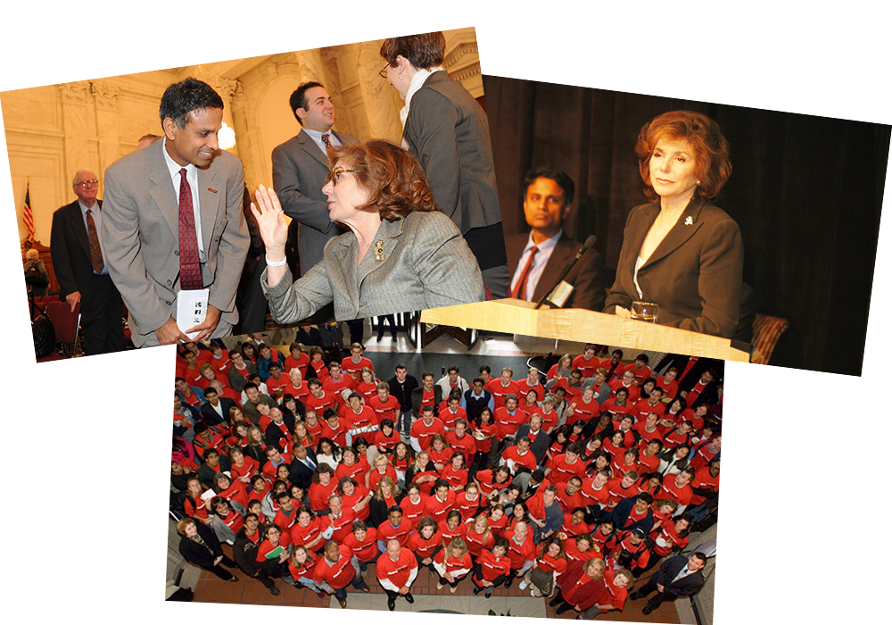
--
“I saw accepting the interim position as a way to help the College through a difficult time. I’d been at CMU for 20 years and thought I owed a lot back,” said Krishnan.
He immediately had his work cut out for him. In addition to change close to home, the global financial crisis was posing unique operating challenges for CMU’s satellite campus in Adelaide, Australia, which CMU had opened a few years prior to Krishnan’s appointment. Krishnan leapt directly into managing those issues, working with leaders on both continents to find solutions that would set up CMU Australia for continued success.
To top it off, this all took place right at the start of a new semester.
It was the case, however, that Krishnan thrived in uncertainty and ambiguity. Rather than relegating himself to crisis manager, he became exactly the leader Heinz College needed at a pivotal time, and won a lot of allies both inside and outside of CMU.
“He was like a bridge between Heinz and the rest of the university,” said Kamlet. “That was true even before he became dean.”
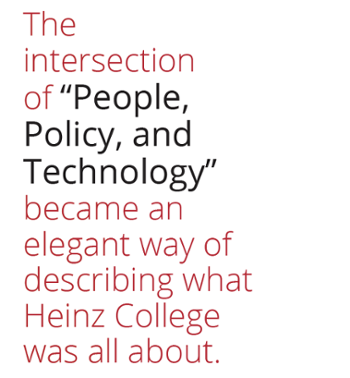 During his first term as dean of Heinz College, Krishnan accomplished many things, but perhaps chief among them was a sharpening of the school’s mission into a coherent strategic vision. The intersection of “People, Policy, and Technology” became an elegant way of describing to outsiders what Heinz College was all about. It also became something of a rallying cry, fortifying the College’s place at the university as a center of excellence where scholars of various disciplines could convene to address novel, emerging societal problems—and use social science and the latest in data science and technology to do so.
During his first term as dean of Heinz College, Krishnan accomplished many things, but perhaps chief among them was a sharpening of the school’s mission into a coherent strategic vision. The intersection of “People, Policy, and Technology” became an elegant way of describing to outsiders what Heinz College was all about. It also became something of a rallying cry, fortifying the College’s place at the university as a center of excellence where scholars of various disciplines could convene to address novel, emerging societal problems—and use social science and the latest in data science and technology to do so.
As a professor, he had already led the creation of iLab at CMU, a “lab of labs” as he calls it. An early success for Krishnan, iLab was an experiment in open data where Heinz faculty could convene colleagues campus-wide around an open data repository to investigate important societal scale phenomena. It allowed for lab concepts to be trialed before they could grow into something independent.
“We had data and we had computing power, so we created space for faculty to step up and show what they could do by piloting their ideas,” said Krishnan. “Then, we could demonstrate to the external world that we already had this group of people who were engaged with each other on campus.”
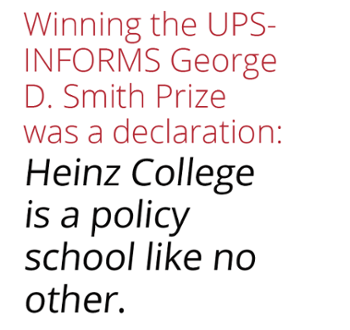 With growing confidence from the success of iLab, research labs and centers were a key part of Krishnan’s vision for the school and its contribution to the university and to society. Center-scale efforts became a way for Heinz College to connect with the rest of CMU, as well as industry partners. In addition to iLab, this vision was further validated by the establishment in 2011 of the Living Analytics Research Center (LARC) in partnership with Singapore Management University, which created new opportunities for “smart nation” or “smart cities” research. In 2017, PwC sponsored the Digital Transformation and Innovation Center at CMU (originally the Risk and Regulatory Innovation Center), with an investment of $25 million over five years. The center is one of the largest industry-funded efforts in the history of CMU, and the largest ever investment at Heinz.
With growing confidence from the success of iLab, research labs and centers were a key part of Krishnan’s vision for the school and its contribution to the university and to society. Center-scale efforts became a way for Heinz College to connect with the rest of CMU, as well as industry partners. In addition to iLab, this vision was further validated by the establishment in 2011 of the Living Analytics Research Center (LARC) in partnership with Singapore Management University, which created new opportunities for “smart nation” or “smart cities” research. In 2017, PwC sponsored the Digital Transformation and Innovation Center at CMU (originally the Risk and Regulatory Innovation Center), with an investment of $25 million over five years. The center is one of the largest industry-funded efforts in the history of CMU, and the largest ever investment at Heinz.
But while Krishnan’s leadership has resulted in a ramping up of capabilities, research heft, and cross-sector partnerships, his most profound imprint might be one of identity. Krishnan spurred Heinz College to throw its collective hat in the ring for the UPS-INFORMS George D. Smith Prize, awarded to the top school in Analytics Education. That process led to a kind of institutional soul-searching, a top-to-bottom “all hands on deck” exercise that engaged the entire school to define not only what Heinz College did, but who Heinz College was. And in winning, it was a declaration: Heinz College is a policy school like no other.
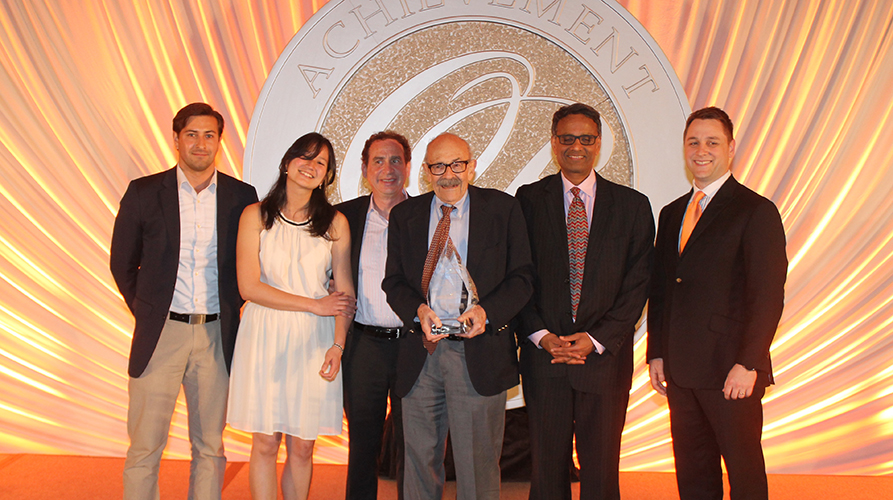
Shane Butler, Carla Luyo, Andy Wasser, Al Blumstein, Krishnan, and Jon Nehlsen accepting the UPS-INFORMS George D. Smith Prize for Heinz College
--
In 2016, during Krishnan’s second term, Heinz College became the only institution that was home to both the Smith Prize as well as the John von Neumann Theory Prize in operations research and the management sciences, which had been awarded to Heinz College’s founding dean, William W. “Bill” Cooper, years before. It wasn’t just a competition—it was the inking of a new chapter in a story that began decades earlier.
![]()
Al Blumstein is a giant in the field of operations research, a CMU University Professor, Stockholm Prize-winning scholar, and the second president of INFORMS. At Heinz College, he is legend. In 1988, he was the dean who first hired Krishnan (who would go on to become the 24th president of INFORMS).
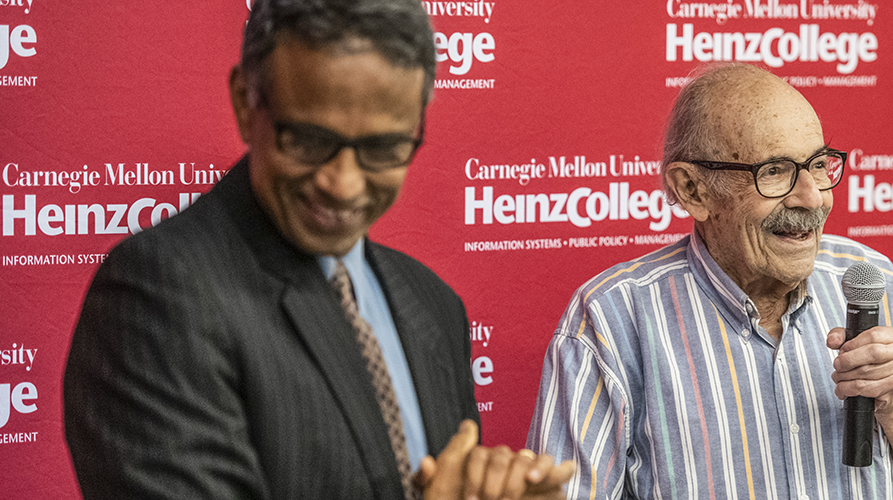
--
To Blumstein, Krishnan’s background in OR and IS was a major plus, but that wasn’t the only factor that pushed Krishnan to the front of the pack. Blumstein saw at the time that analytics, OR, and IS were becoming increasingly relevant in the public policy context—including his own work in public interest fields like transportation and criminal justice. He recognized Krishnan as uniquely suited for the future of the school, due to the combination of his skills, his curiosity, and a plasticity to work across contexts.
“Krishnan was an ideal individual because he had the interest and the analytic strengths to deal with a whole array of public policy issues, and he could really relate to people,” said Blumstein.
“There are a lot of very bright people, who when you sit down and chat with them you find they’re very narrow. But Krishnan knew how to interact, and that was important because we were building a cross-cutting and team-oriented community at SUPA, not just strong individuals doing their stray work.”
It didn’t hurt that Bill Cooper wrote Krishnan’s recommendation. But he proved himself, “at every stage of review,” according to Blumstein. So, while Krishnan to this day expresses some surprise at being hired, Blumstein characterizes it quite differently.
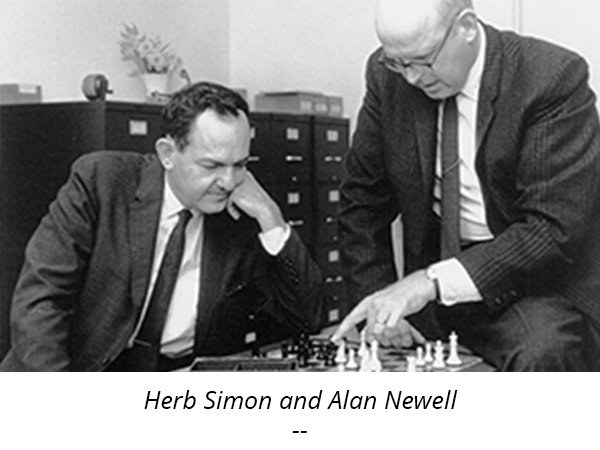
“He was an easy choice,” said Blumstein. “It was obvious that he brought something that we needed.”
Early in his career at CMU, Krishnan recalls frequently traversing campus to make connections with colleagues across the university, such as Alan Newell in the School of Computer Science and Art Westerberg in the College of Engineering. He would walk to other buildings where no one knew him, to meet people where they were and have conversations about their work.
“That was something I gained in graduate school, an ability to converse across fields. When I arrived at CMU, I think [making contacts in other departments] was very natural for me,” said Krishnan.
It did, however, take some time to get his bearings back at SUPA. While he had an interest in public sector issues, other Heinz scholars including those in his cohort worked in a specific policy context, which highlighted to him that he was something of an outlier.
“I was the odd duck at the time,” said Krishnan. “I was not focused on any particular policy or management problems, so the senior faculty weren’t always sure what to do with me.”
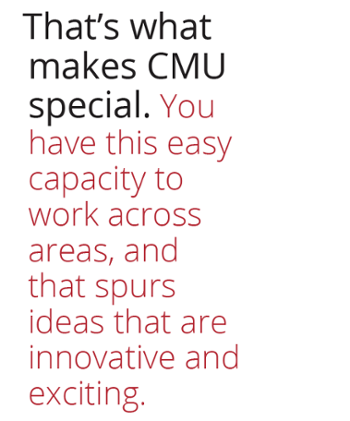 That view seems to be substantiated by his early reviews. Krishnan’s research was so different from his colleagues that SUPA would bring in Newell and fellow CMU computer science pioneer, Nobel Laureate Herb Simon, to provide needed perspective. But after a few years, Krishnan linked up with Heinz College professor George Duncan, a renowned statistician, on his work in privacy and confidentiality. Duncan’s research was policy-relevant but also involved stats and OR, placing it squarely in Krishnan’s wheelhouse. Everything clicked.
That view seems to be substantiated by his early reviews. Krishnan’s research was so different from his colleagues that SUPA would bring in Newell and fellow CMU computer science pioneer, Nobel Laureate Herb Simon, to provide needed perspective. But after a few years, Krishnan linked up with Heinz College professor George Duncan, a renowned statistician, on his work in privacy and confidentiality. Duncan’s research was policy-relevant but also involved stats and OR, placing it squarely in Krishnan’s wheelhouse. Everything clicked.
“I felt drawn in by his enthusiasm for research engagement on challenging problems,” said Duncan. “I continue to be impressed with the amazing intellect, tenacious devotion to consequential research, and ever-questioning spirit that Krishnan has evidenced ever since he joined Heinz College.”
From there, Krishnan began branching out in ways that not only reached across CMU, but that bolstered the university in fields that were set to grow rapidly in the internet age, such as e-commerce, peer-to-peer networks, decision support systems, and data science.
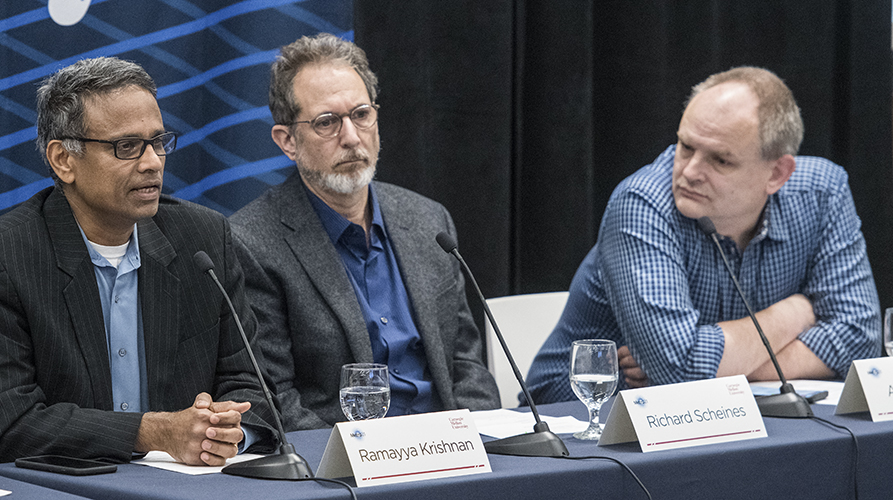
--
“That’s what makes CMU special. You have this easy capacity to work across areas, and that spurs ideas that are innovative and exciting,” said Krishnan.
The impulse to connect across the university was not only something that marked Krishnan’s career as a professor, it led directly to early successes building coalitions and partnerships once he became dean.
As a former dean watching it all unfold, Blumstein took heart.
“When I was dean, I made it a point to interact with faculty and create a sense of togetherness, a sense of who we were here at Heinz while building our research capacity. Krishnan did that brilliantly within Heinz as well, but he also did so admirably with other departments,” said Blumstein. “He reached out to other parts of the CMU campus that are an essential part of who we are. More than I was able to do.”
![]()
The cross-boundary inquiry and collaboration that is now Krishnan’s signature didn’t come out of nowhere. He was a strong student from a very young age, but he came up in a strictly traditional landscape: 1970s India. The India of Krishnan’s youth had been independent from Britain for many years, but while opportunity was growing it was not the major economy it is today.
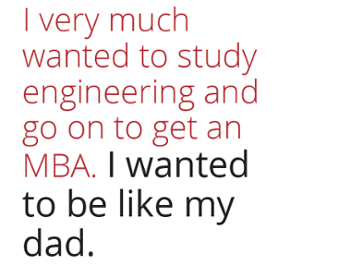 He describes a good secondary education where he had opportunities to stand out, sometimes through leadership and sometimes wearing a dunce cap (his words). At the time, success on state-administered merit-based exams was one of the only reliable avenues to a better life. Good performance opened doors—elite performance kicked them down. For Krishnan, a top score meant entrance to the prestigious Indian Institutes of Technology (IIT) at the age of 16.
He describes a good secondary education where he had opportunities to stand out, sometimes through leadership and sometimes wearing a dunce cap (his words). At the time, success on state-administered merit-based exams was one of the only reliable avenues to a better life. Good performance opened doors—elite performance kicked them down. For Krishnan, a top score meant entrance to the prestigious Indian Institutes of Technology (IIT) at the age of 16.
He could have gone to IIT Kanpur in the north of the country (he may have met his wife, Heinz College professor Rema Padman, sooner had he done that), but he opted to stay closer to home to attend IIT Madras.
“The choices in front of you then were to go to engineering school or medical school. Those were the two major choices,” said Krishnan. “In high school, I very much wanted to study engineering and go on to get an MBA. I wanted to be like my dad.”
From the time he was 11 years old, Krishnan saw himself on a traditional path to success, much like his father. Krishnan’s father had pulled himself out of difficult circumstances by performing well on civil service exams in the 1950s. He studied chemical engineering and served in the public sector in India before going on to be a successful executive. Krishnan describes his parents as having a huge influence on him and his siblings, “a great combination,” teaching them values, work ethic, and self-discipline.
As he grew up, he deviated from that mold. While IIT kept him close to home and familiar environments, it opened him up to the wider world. His fellow students came from all over India, other big cities as well as small towns, and many students came from outside the country. IIT was a residential school, so the students all lived in dorms throughout. Krishnan affectionately describes sharing a single landline with his entire non-air conditioned dorm, and spending time in the rec room listening to Hotel California on repeat.
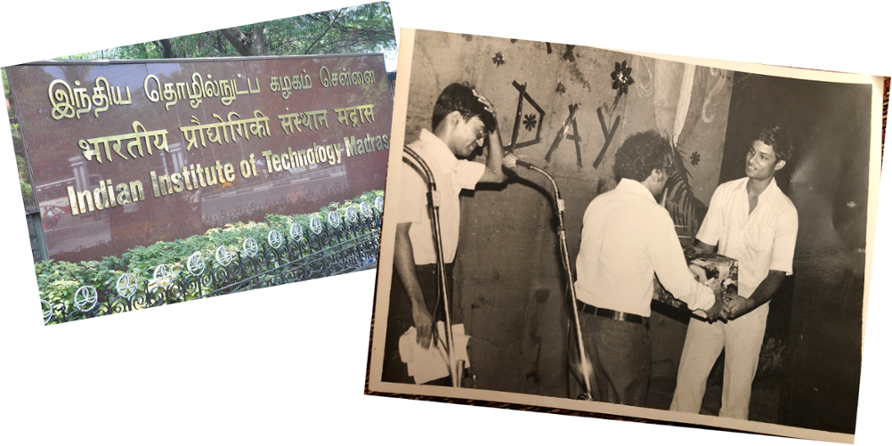
--
“That’s a network I still have. The quality of intellect in that group and the relationships we formed were incredibly strong,” said Krishnan.
That network became especially important when he went to graduate school. He was the first of his family to go abroad for school, but he didn’t feel alone. A large segment of his IIT class came to the U.S. after graduating, and some even settled, as he did, in Texas.
“It wasn’t a culture shock when I came to the United States. Hotel California was still playing, Led Zeppelin and Deep Purple. My IITians had a community here,” he said.
He admits that reconstructing the past decades later may not fully account for how he was feeling at the time, but certainly that experience embedded in Krishnan a deep understanding of the importance of extended networks, mentorship, and the value of trust among peers. The community and camaraderie among his cohort at IIT informed not only how he conducted himself in graduate school, but also his emphasis on connecting with others as a professor, and later as dean.
While IIT was a game-changer, it wasn’t until Krishnan landed here in the U.S. at the University of Texas at Austin that he was given the runway to fully explore his interests. It was there in the Texas heat that he first met Heinz College’s founding dean, operations research maestro and grandfather of management science, Bill Cooper.
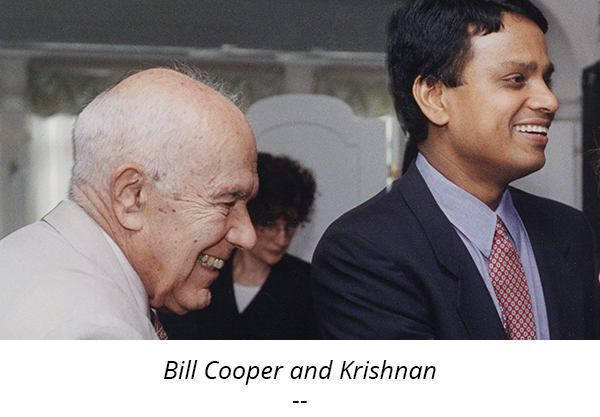
Krishnan worked as a research assistant—a “grunt,” in his telling—for Cooper and his colleague Abe Charnes. They made a huge impression. In 1983, Krishnan shifted his focus from engineering and operations research to management science and information systems. At Austin, he was surrounded by mentors who were titans in OR and management science, not only Cooper and Charnes, but also figures like Darwin Klingman, Leon Lasdon, Fred Glover, and Art Geoffrion. Lasdon, who was one of Krishnan’s advisors, wrote a sizable piece of code that powered Microsoft Excel’s Solver tool.
“Leon was working on that when I was his student. That was very impactful, as Excel was and still is a dominant tool,” said Krishnan. “I was very fortunate to be working with mentors who were making such important contributions.”
He was tapped by Klingman to work on an applied OR problem for energy giant Citgo, devising decision support methods for distribution and planning.
“[Klingman] didn’t give me or other students on the team strict guidelines or guardrails. He let me follow my own interests in addition to his research projects. That was incredibly valuable, as it allowed me to wander and explore,” said Krishnan.
That project exposed him to a real-world problem and the application of analytic techniques. Klingman and his team won the Franz Edelman award from INFORMS for their work. It was also at that time that Krishnan met Rema Padman, his future wife. She was a fellow grad student in Klingman’s lab and played a lead role on the Citgo project—Krishnan and Padman co-authored the paper that was published for this work.
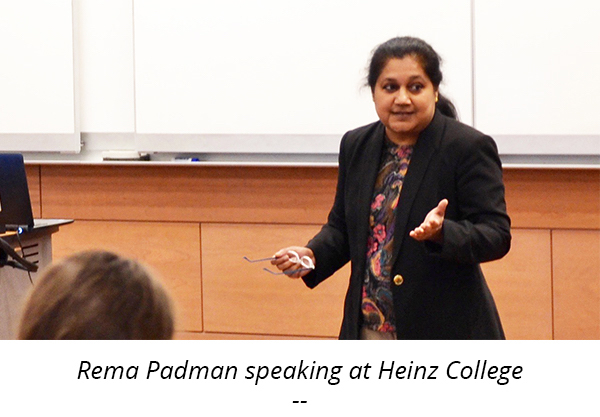
“His approach to life hasn’t really changed much since those days,” said Padman. “He has always been fun loving, cracking jokes, open to listening to all types and genres of music and watching all kinds of movies—in sharp contrast to my own tolerance, which is very low.”
Reflecting on graduate school, Krishnan says there are three main dividends that came from choosing to go to Texas.
“The first, obviously, is meeting Rema, whom I’d met in India but I don’t think she had any memory of me,” he said. The second was an enduring love of German beer and Tex-Mex food. It’s an understatement to say the guy loves fajitas.
The third dividend, as he describes it, was the way that his graduate program was structured. It allowed Krishnan to become multidisciplinary without really knowing it—a student in an OR/IS program with minors in computer science and statistics, and an emphasis on artificial intelligence. Look ahead to today, and the blend of these disciplines is extremely relevant.
“A lot of this is serendipity,” said Krishnan. “This was during the second wave of AI in the 1980s, and I had pursued this combination of subjects simply because I was interested in them. But even at UT where there was so much innovation happening, my committee was like ‘what is this guy doing?’ I had a bit of a struggle because I went my own way.”
In hindsight, his Ph.D. topic seems sage: he was an engineer with a background in computer science and statistics using AI systems to formulate OR models.
“Back then, it was what was known as ‘expert systems’ AI, but that was followed by an AI winter for years and years,” said Krishnan. “Fast forward to now, we are in a world of machine learning and data-intensive AI, so it is a new wave but those competencies I gained at Texas turned out to be a significant advantage.”
Krishnan has led Heinz College in that same vein: Innovation is constant, but the right combination of skills makes someone adaptable to what’s next. Data and technology are appreciated as valuable policy complements, and vice versa. Pervasive technological changes in society are acknowledged, analyzed, and explored. Experts and students from different disciplines solve problems together and learn to understand multiple perspectives and methods from outside their own field. Solutions don’t languish in the abstract as a result—there is always an eye toward application and deployment, and making technology translatable to the human beings who will use it. That’s when something can have a real impact.
Bill Cooper would have called this “intelligent action.” It’s the principle Heinz College was founded on, what the school was designed to do. For Krishnan, intelligent action encapsulates even more than an educational mission. It’s a philosophy. An attitude. A way of life.
![]()
A decade into his career at Carnegie Mellon, Krishnan led the creation of the Master of Information Systems Management (MISM) program— now one of the flagship academic programs of Heinz College—to address what he saw as a gap in the market as “digital transformation” accelerated. In the 1990s and early 2000s, leading up to the moment when Krishnan took the reins, ”digital transformation” were largely buzzwords outside of academic circles, a futurist curio at the edge of corporate thinking. But as the digital economy came of age, it began to affect more than just the private sector and e-commerce. Technology and big data were beginning to have real impacts on society, from social media and the dissemination of information to transportation, health care, and government services.
In this changing landscape, there was a growing need for “business technologists” who possessed both technical ability and management acumen. Krishnan believed society needed more quantitative, analytical leaders who not only understand technology, but also understand how organizations and people operate so they could actually deploy technological solutions that make a difference.
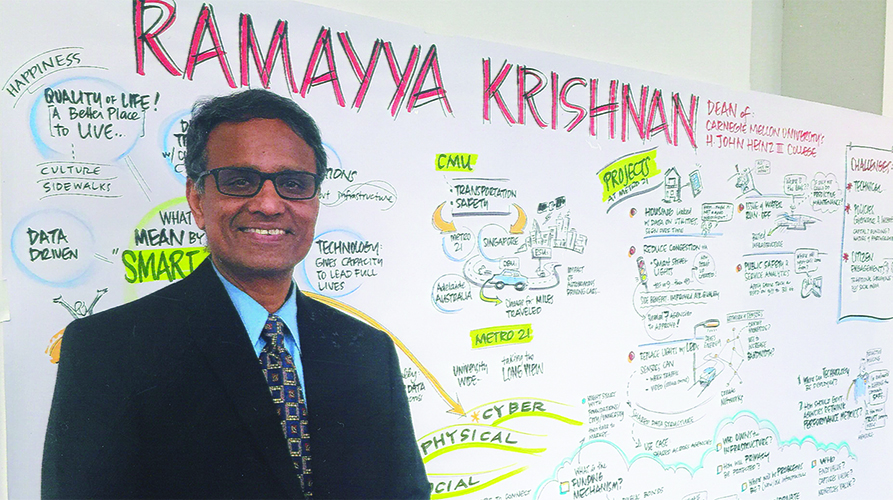
Krishnan at the Deloitte Smart Cities partner meeting in 2016
--
“The idea for MISM originally came from the project I’d done for Citgo as a Ph.D. student back in Austin, and the real-world application of that work. I wanted to create a program that would cross-train students who had a background in something like CS or engineering, and give them an education that covered technology as well as areas like finance, economics, and decision-making methods—areas in which Heinz was already a leader.”
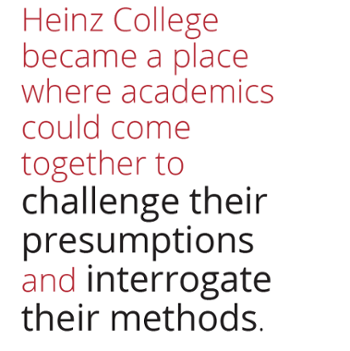 The first MISM cohort was 10 students, but the idea quickly took off. Today, the MISM program has grown into Carnegie Mellon’s School of Information Systems and Management, a world leader in information systems management and analytics, graduating over 300 students each year.
The first MISM cohort was 10 students, but the idea quickly took off. Today, the MISM program has grown into Carnegie Mellon’s School of Information Systems and Management, a world leader in information systems management and analytics, graduating over 300 students each year.
It became increasingly apparent that experts and students in the areas of public policy and technology had a great deal to learn from each other and would benefit greatly from closer collaboration, with data analytics and management as the connecting fibers. Today, Heinz College is organized as two co-located graduate schools—the School of Public Policy and Management, and the School of Information Systems and Management. Uniting these schools under a shared vision and core competencies has been one of the defining achievements of Krishnan’s deanship.
“Information systems, data analytics, machine learning—these days, you cannot be an effective manager at any level of government unless you know about this stuff,” said Kamlet. “You don’t necessarily need to know how it all works on a technical level, but you need to grasp what they do and what they can be used for. Under Krishnan, Heinz College has become the school best equipped to deliver that education.”
Clarifying that vision—and hiring faculty who could advance it—gave Heinz College a new kind of street cred with a slate of researchers ready to dig into technology and data and their bearing on social issues, business operations, and public life. Heinz College was now not only home to renowned researchers and thought leaders in policy, management, and decision sciences, it was attracting unique cross-disciplinary talents who may have gravitated to top b-schools in another era.
The blend was potent. Heinz College became a place where academics could come together to challenge their presumptions and interrogate their methods, a place where ideas were not contained by departmental walls or traditional models, and where computer scientists, economists, statisticians, operations researchers, information systems scholars, and public policy experts could not only sit side-by-side—they could discover new ways of analyzing the world that wouldn’t have been possible individually. They could become partners.
![]()
To Krishnan and Padman, CMU has become more than a professional home. Their two children are recent graduates from CMU as well, so their roots on campus run deep. The university and the family are inextricably linked— their past, present, and future interwoven like the colors of a tartan.
“He enjoys the challenges and opportunities that the passage of years have opened up for him,” said Padman.
 So it’s no wonder, when speaking of that future and his unprecedented third term as dean, Krishnan exudes the energy of someone who’s just getting started, and more committed than ever. He sees the College as being on a journey that is just beginning, a place where monumental growth has already happened, and where big things lie ahead.
So it’s no wonder, when speaking of that future and his unprecedented third term as dean, Krishnan exudes the energy of someone who’s just getting started, and more committed than ever. He sees the College as being on a journey that is just beginning, a place where monumental growth has already happened, and where big things lie ahead.
Heinz College has just recently entered into a partnership with CMU’s Dietrich College of Humanities and Social Sciences to offer a joint bachelor’s degree in Information Systems. Krishnan sees that as the first step in establishing Heinz College as a major player in the undergraduate sphere and bringing issues concerning technology, data, and public policy to the forefront of higher education. The College has also seen an expansion of offerings at the master’s level, as well as the creation of executive education programs that have carved out space as premier training programs for current and aspiring executives in technology, risk, cybersecurity, and data analytics.
Krishnan’s relationships proved important to his success at every step of his career, but perhaps none more so than his relationship with long-time friend and advisor, Keith Block (DC ’84, HNZ ’84). In 2015, Krishnan and Block began to wrestle with an idea that deeply concerned them both: the emergence of information technology as society’s key economic driver would break the coupling of economic growth and widespread prosperity—the scaling returns of technology meant that technology producers could prosper, while citizens without those skills could be left in the dust. Having spent his career in the tech industry, Block understood this bleak possibility firsthand, but also thought that technology could be part of the solution and that CMU was the perfect place to find those solutions. Krishnan—whom Block has called an “inspiration”—agreed. In 2018, Block and his wife, Suzanne Kelley, endowed the Block Center for Technology and Society.
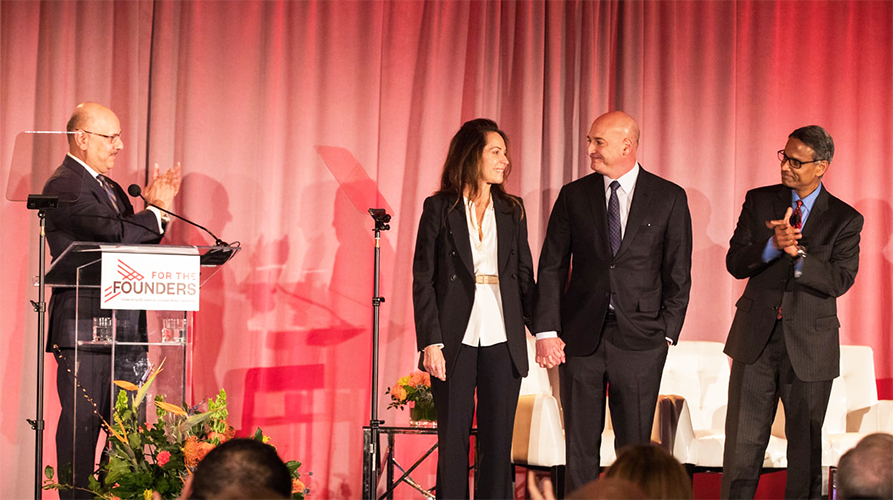
CMU President Farnam Jahanian, Suzanne Kelley and Keith Block, and Krishnan
--
The Center’s goal is to influence public policy related to technological change, and counts as partners leaders from the private sector as well as labor organizations including the AFL-CIO. The Block Center mission is almost perfectly aligned with the strengths at Heinz College and at CMU more broadly, and the Center’s research stands to be more relevant and important than ever in the post-pandemic world—including projects focused on safely reopening state and local economies using evidence-based strategies.
 “There’s a lot of work yet to be done to fully realize the vision of being the best place on earth for bringing together scholars and students interested in policy and technology in a world that’s being transformed by both,” said Krishnan. “More than ever before, our vision is in concert with the university’s vision, which is to be a force for good at the intersection of technology and humanity. We have an opportunity to deliver education and research at this intersection at every level now—undergraduate, graduate, and of course Ph.D.”
“There’s a lot of work yet to be done to fully realize the vision of being the best place on earth for bringing together scholars and students interested in policy and technology in a world that’s being transformed by both,” said Krishnan. “More than ever before, our vision is in concert with the university’s vision, which is to be a force for good at the intersection of technology and humanity. We have an opportunity to deliver education and research at this intersection at every level now—undergraduate, graduate, and of course Ph.D.”
Perhaps most importantly, as he leads Heinz College through this strange new normal of Zoom meetings, hybrid education, and widespread disruption, Krishnan not only has experience under his belt. He has people in his corner.
“Heinz College is incredibly well-positioned to thrive in the decade ahead and that is, in no small part, due to Krishnan’s leadership. I could not be happier for both Krishnan and CMU,” said Block.
“When it was announced to the faculty that Krishnan was accepting a third term, I’ve never heard such applause in that room. That’s a testament to what he means to this place,” said Blumstein.